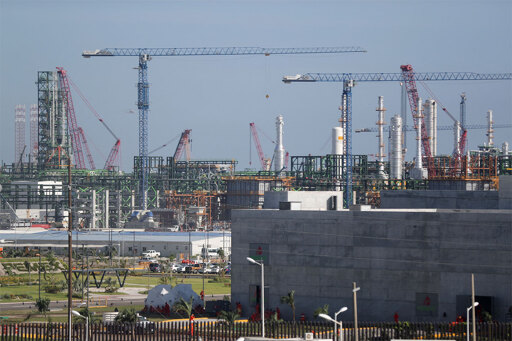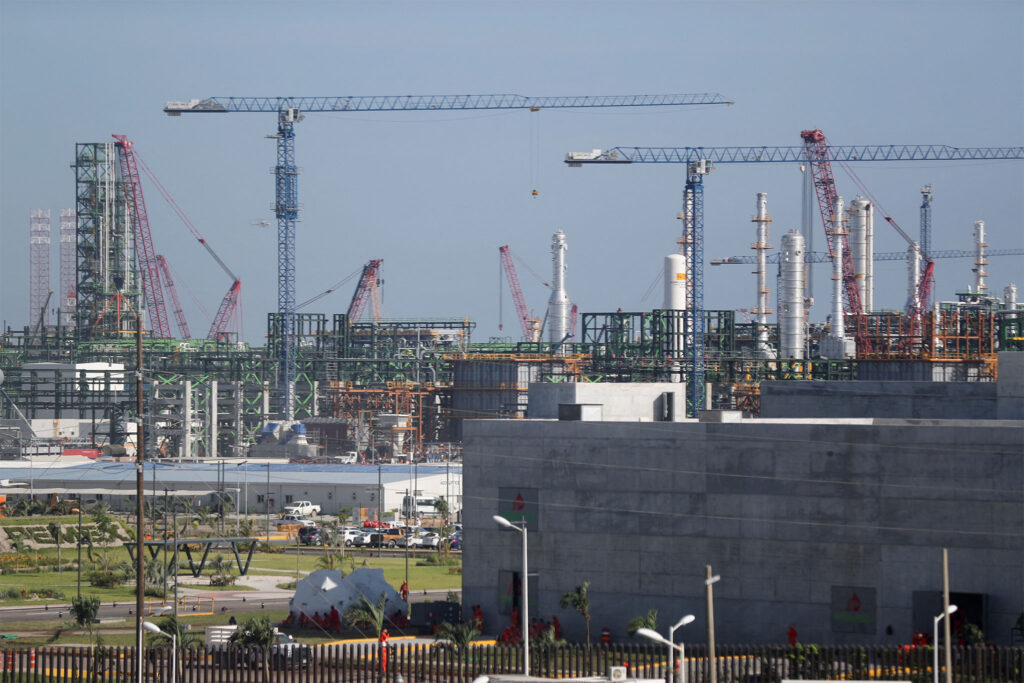This editorial by Arturo Huerta González originally appeared in the October 14, 2025 edition of La Jornada de Oriente, the Puebla version of La Jornada*, Mexico’s premier left wing daily newspaper. The views expressed in this article are the author’s own and do not necessarily reflect those of the Mexico Solidarity Project.*
For August 2025, INEGI ‘s Global Indicator of Economic Activity indicated annual growth of 0.2% and estimated an annual decline of 2.0% in secondary activities. This suggests that the IMF’s 1% growth target1, nor [the Central Bank of Mexico] Banxico’s 0.6% target, will not be met. It appears that the growth trend will be lower than that of the previous six-year term, when average annual growth was 0.8%, although in the first year of that government in 2019, GDP fell 0.1%. The stagnation of the economy is a result of the high interest rates established by Banxico, as well as by commercial banks, as well as budget cuts by the Treasury and the cheap dollar, to lower imports and lower inflation, at the cost of these displacing national production and increasing unemployment and underemployment. IMSS data reflects a 27% drop in formal job creation in the first 9 months of this year compared to the same period last year.
Added to this are the adverse policies implemented by the US government against Mexico. Heavy vehicle exports had an annualized drop of 58.3% in September, reported INEGI. Remittances in August show an annual drop of 8.3%, reported by Banxico. Inflation in September 2025 is at 3.76%, which is evidence of Banxico’s misguided policy of high interest rates to lower them to the target level of 3%, because it makes credit more expensive, which restricts investment and production, so supply pressures (high costs, product shortages) continue to put pressure on prices, and is added to the increase in companies’ profit margins.
The Secretary of Finance in the plenary session of the Senate of the Republic on October 1, 2025, noted that “our country continues to advance, growth remains positive and sustained despite trade pressures and we reaffirm our status as one of the most open economies in the world .” He celebrates that Mexico is one of the most open economies, while neoliberalism is being questioned due to its dark results of deindustrialization, unemployment, and low growth, which is why the United States after promoting free trade, has moved on to establishing protectionist policies to curb imports and boost production and employment.
Although the government talks about Plan Mexico, it lacks the macroeconomic support to make it viable: high interest rates, a cheap dollar, and budget cuts are detrimental to domestic investment and import substitution.
On the other hand, in Mexico, free trade is emphasized. We must not forget that if Mexico industrialized and grew, it was thanks to the protectionist policies that predominated from 1947 until the mid-1980s and to the intervention of the State in the economy, where the central bank was functional to economic growth. However, with the predominance of neoliberal policies of generalized openness, coupled with high interest rates, a cheap dollar, banking sector deregulation, and a primary fiscal surplus (where less is spent than is collected, excluding debt payments) which works to reduce the fiscal deficit and prevent debt growth, the economy has been stagnant.
It should be noted that public debt is not reduced by stopping spending. This may be true for a family and a company, but not for the government, since by reducing spending, it contracts demand, economic activity, and employment: therefore the government collects less and has to increase social and public security spending to counteract the problems of poverty and crime generated by lower economic growth, which is why pressures on finances and public debt continue.
Fiscal policy should not be aimed at reducing the deficit or the debt ratio, but instead act countercyclically to counteract the fall in private consumption and investment, as well as exports, and thus avoid a decline in economic activity. This must be accompanied by lower interest rates to reduce the cost of debt service and improve the spending and investment capacity of indebted sectors, which would further boost the economy. As the economy grows, the government will collect more tax and social and public security spending will be lower, because there will be greater job creation, thus improving public and private sector finances and reducing debt.
The Mexican Stock Exchange (BMV) is doing very well. From January 2 to October 10, 2025, it expects growth of 23.29%, as a result of monetary, exchange rate, and fiscal policies favoring the capital market, at the expense of sacrificing economic growth and job creation. This stock market boom will end up being unsustainable because it lacks a productive foundation to leverage the rise in stock prices.
Monetary and fiscal authorities are not addressing the challenges facing the national economy, both in terms of breaking out of stagnation, increasing employment, and dealing with the blows arising from the US government’s policy of reducing Mexico’s exports to the country and its desire for Mexico to buy more, which would further reduce productive activity. Although the government talks about Plan Mexico, it lacks the macroeconomic support to make it viable. High interest rates, a cheap dollar, and budget cuts are detrimental to investment and import substitution.
We cannot continue with the prevailing neoliberal policies that are causing the problems we face.
Editor’s note: The IMF has projected a 1% growth rate for Mexico, an improvement from July’s 0.2% growth forecast and April’s .03% estimated contraction, but below the growth forecast of 1.7% the IMF had made in January. The US’ growth forecast for 2025 is 2%, Canada’s is 1.2%, making Mexico the most sluggish of the three major North American economies.  ︎
︎
Trump’s Imperialist Bravado
October 17, 2025
The international community must rein in the interventionist impulses of the US and demand that it cease its destabilizing practices.
How is the Mexican Economy Doing?
October 17, 2025October 17, 2025
Monetary and fiscal authorities are not addressing challenges facing the national economy, both in terms of stagnation, increasing employment, and dealing with the blows arising from the US.
Mexican Government & Soft Drink Monopolies Agree to Reduce Soda Tax
October 16, 2025October 16, 2025
The reduction was announced after representatives from different parties complained about pressure from lobbyists to avoid imposing the tax on light beverages.
The post How is the Mexican Economy Doing? appeared first on Mexico Solidarity Media.
From Mexico Solidarity Media via this RSS feed





